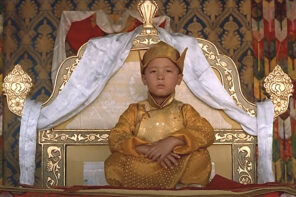When His Holiness the Dalai Lama (HHDL) posted on Facebook this last Monday that “religion is no longer adequate,” every journalist with a religious beat was up in arms over his words. What did this mean for the millions of practicing Buddhists, not to mention for his millions of spiritually-curious online followers? But his atheistic-toned words should not come as a surprise.  Back in June, he tweeted that he is “increasingly convinced that the time has come to find a way of thinking about spirituality and ethics beyond religion altogether.”
Back in June, he tweeted that he is “increasingly convinced that the time has come to find a way of thinking about spirituality and ethics beyond religion altogether.”
Slowly, HHDL’s social media team has been tweaking the guru’s image to better align with our more secular views. Westerners are drawn to Buddhism precisely because of its liberating qualities: As Walpopl Rahula wrote in What the Buddha Taught, arguably the most influential piece of Buddhist literature in the West, the “freedom of thought allowed by the Buddha is unheard of elsewhere in the history of religions.” We do not have to commit to the religion: no tedious rituals, no mandatory congregations. We don’t have to give up sex or pork or Miller Lite. We can associate with the religion at the most miniscule level, sitting and breathing deep and calling it “mindfulness practice.”
Besides recruiting a hoard of American Buddhists, devotion levels varying across the board, why would the Dalai Lama’s social media team be so adamant about portraying a spiritual-but-not-religious leader? Some have speculated that his entire decades-long international campaign, painting him as an English-speaking, not strictly religious, approachable monk has political reasons. That HHDL’s ultimate goal is to free Tibet form Chinese oppression. Which, if in fact this is social media manipulation, isn’t that horrible of a reason. In fact, it’s pretty pious.




